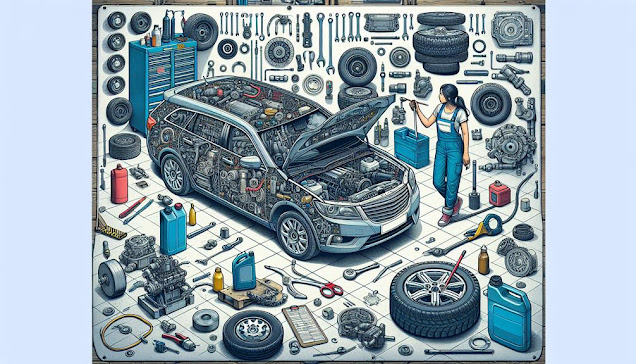Understanding Vehicle Inspection Procedures: Essential Knowledge for Every Motorist
Inspection of vehicles is an essential element of ownership of a car to ensure security and compliance with the legal requirements. This guide will provide drivers with important information needed to guide the process of inspection for their vehicle efficiently.
Understanding Vehicle Inspection
The Purpose of Vehicle Inspections
Inspections of vehicles are intended to ensure that vehicles are in compliance with certain safety and emission standards. Inspections aid in identifying the potential problems which could cause injuries or accidents to the environment.
Types of Vehicle Inspections
There are a variety of inspections for vehicles, such as annual safety inspections, emissions tests as well as pre-purchase checks. Each has a specific function and comes with different standards.
Preparing for a Vehicle Inspection
Essential Pre-Inspection Checks
Before you conduct your vehicle inspection it is essential to conduct simple inspections. Make sure your brakes, lights and tires as well as your windscreen wipers are all in good condition. Also, be sure to check the level of fluid as well as the health of your battery.
Gathering Necessary Documentation
Bring all the necessary documents including your car registration and proof of insurance and any prior inspection reports for the inspection.
During the Inspection
What Inspectors Look For
Learn what inspectors are typically looking for the safety features of a vehicle emissions, vehicle safety features, and general mechanical state. They will examine the brake system, steering lights, exhaust systems, in addition to other elements.
Handling Inspection Results
If your car is inspected and passes and you're awarded an official certificate. If it doesn't then you'll receive a report that outlines the problems. Be aware of what the consequences of such events and what next steps to follow.
Post-Inspection: Addressing Issues
Handling Repair Recommendations
If repairs are required then prioritize them based on the safety requirements and legal standards. Employ a reputable mechanic to ensure the highest quality of work.
Re-Inspection Procedures
In the event of a failure be aware of the process for re-inspection. Be aware of the timeframe for making repairs and scheduling a re-inspection appointment to make sure that the repairs are in the compliance.
Staying Informed and Compliant
Maintaining the Schedule of Inspections
Keep a schedule of regular inspections of your vehicle. This is not just to ensure the compliance of legal requirements, but also assists to maintain your vehicle's durability and performance.
Understanding Regional Variations in Vehicle Inspection Requirements
Inspection requirements for vehicles can vary substantially based on your area of residence. Be aware of the specific specifications and requirements in your area.
Ensuring Safety and Compliance
The process of preparing for inspections is an essential responsibility for all drivers. If you know what's involved in preparing properly, and responding to any issues swiftly to ensure that your vehicle is in good, safe and in top condition.



Comments
Post a Comment